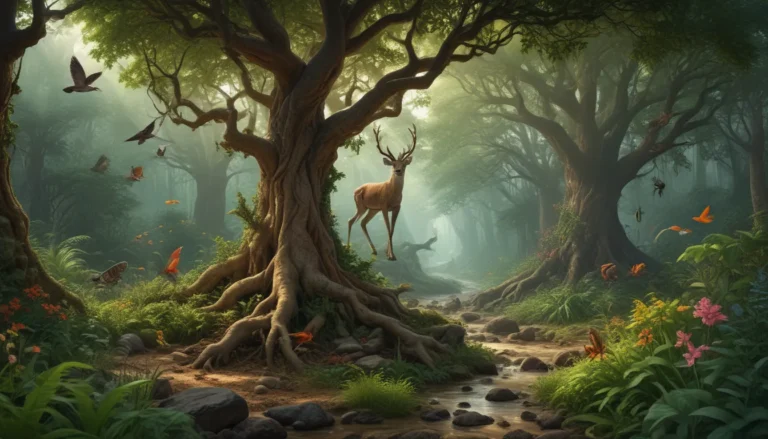A Note About Images: The images used in our articles are for illustration purposes only and may not exactly match the content. They are meant to engage readers, but the text should be relied upon for accurate information.
In the intricate web of nature, there exist unsung heroes known as keystone species. These creatures, though not always the largest or most dominant, play a crucial role in maintaining the delicate balance of biodiversity within their ecosystems. With a disproportionately large impact on their environment, keystone species influence the abundance and distribution of other species, shaping the world we know.
The Significance of Keystone Species
- Keystone species, such as wolves and bees, are essential for maintaining healthy ecosystems, impacting biodiversity, food webs, and even human well-being.
- Without keystone species, the collapse of ecosystems is inevitable, as they serve as the backbone holding everything together.
- Predators like wolves, lions, and sharks are often considered keystone species, regulating prey populations and allowing other species to flourish.
The Diversity of Keystone Species
- While predators are commonly associated with being keystone species, plants can also play a vital role in ecosystem balance.
- Beavers, for example, are ecosystem engineers, creating wetlands that support a wide variety of plants, insects, and mammals.
- Bees, as essential pollinators, facilitate the reproduction of countless plant species, contributing to overall biodiversity.
The Impact of Keystone Species on Ecosystems
- The removal of keystone species can have disastrous consequences, leading to a domino effect within ecosystems.
- The reintroduction of keystone species, like gray wolves in Yellowstone National Park, has successfully restored damaged ecosystems.
- Keystone species, such as corals, play a vital role in providing habitats and shelter for numerous marine organisms.
Conservation of Keystone Species
- Protecting and conserving keystone species is crucial for the preservation of biodiversity and the overall functioning of natural systems.
- Oysters, as keystone species in estuarine ecosystems, provide valuable ecosystem services like water filtration.
- The decline of keystone species, like bees, can have implications for human societies, impacting crop yields and agricultural productivity.
Understanding Keystone Species
- Each keystone species has its own unique story and contributes in awe-inspiring ways to the tapestry of life.
- By studying and protecting these key players, we can preserve biodiversity, promote ecological resilience, and safeguard the delicate balance of our planet.
- Every keystone species, from top predators to tiny insects, shapes their ecosystems in ways that are nothing short of astounding.
Conclusion
In conclusion, keystone species are vital for maintaining the balance and stability of ecosystems. Their impact on both species and the environment is profound and essential for conservation efforts. By appreciating and protecting these key players, we can ensure the long-term health of our planet and the preservation of biodiversity. Remember, the next time you encounter a keystone species, take a moment to acknowledge the incredible role it plays in the grand symphony of nature.
FAQs about Keystone Species
-
What exactly is a keystone species?
A keystone species is a plant or animal that has a disproportionately large effect on its surrounding environment compared to its actual abundance or biomass. -
How do keystone species maintain the balance of ecosystems?
Keystone species help maintain the balance of ecosystems by controlling populations, influencing community structure, promoting biodiversity, and shaping the physical environment. -
Can keystone species go extinct?
Yes, keystone species can go extinct, leading to cascading effects on ecosystems if another species cannot fill the keystone role. -
Are keystone species found in every ecosystem?
Keystone species are not necessarily found in every ecosystem, as their presence varies based on ecological interactions. -
Are humans considered keystone species?
Humans are not typically considered keystone species in the traditional ecological sense but can impact ecosystems and other species indirectly.
Keystone species are fundamental to the health and integrity of ecosystems. Their unique roles contribute to the richness of biodiversity and the stability of natural systems. By understanding, appreciating, and protecting these remarkable organisms, we can ensure a harmonious coexistence with the natural world.




